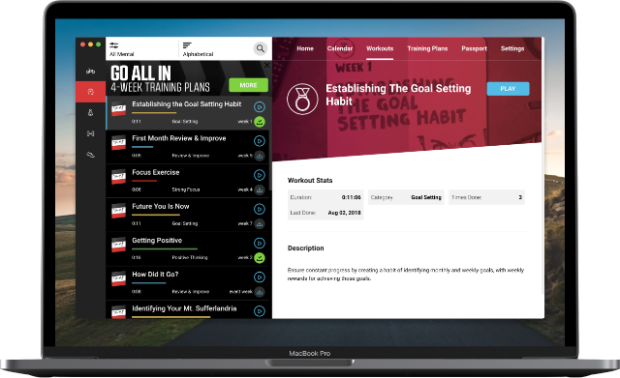Where Does Sufferfest Stand Now?
Now that we’re in the midst of a renaissance of indoor training it’s easy to forget what the dark ages were. The dark ages were often unimaginative, unstructured misery. Or, worse, popping in a DVD, and watching a chipper celebrity ride a trainer for an hour. Indoor training was either what you did when forced indoors, or a means to “eat your broccoli:" achieve some gruelling interval workout or test in lab-like conditions. It was to be endured, not enjoyed.
Then around a decade ago something different emerged. It started as a rumor among cyclists. “Download this video file from the Internet,” they said. Like a bootleg concert video. And it was a revelation. Structured workouts integrated with UCI cycling races. You weren’t watching Cancellera ride his trainer, you were attacking the cobbles of Paris-Roubaix with Spartacus. And the chipper, fastidious cycling instruction was replaced with humorous, irreverent banter – all set to smartly curated indie music. This was not yet another DVD series. It was something different – the birth of Sufferfest. I latched onto it, and started enjoying indoor training for the first time, as did many others.

Sufferfest may have helped spark the renaissance. But the indoor rebirth has since exploded: Zwift-and-competitors, Peloton, TrainerRoad, Golden Cheetah, Xert, and others. Where does Sufferfest stand now? Was it a one-trick pony, a temporary oasis on the way to the future of rich virtual worlds and head-to-head competition? And does it offer competition to the wonkish training plan generation, rich analytics, and community of smart people provided by TrainerRoad or Xert? Does it make sense in the age of the smart trainer?
Sufferfest didn’t rest. It adapted by offering a comprehensive training ecosystem. It is no longer just about the videos and hip playlists, though they still feature prominently. It added support for smart trainers and apps, and hired world-class coaches to provide credible training plans and a cohesive structure to workouts, including a new twist on regular performance testing as an alternative to the venerable, classic “FTP test.” It offers tools to plan your entire competitive season, outdoor included. And it’s also expanded into comprehensive off-the-bike routines for strength, yoga, and mental training – something notably lacking from most competitors.
I’ve used Sufferfest in all its incarnations. From grainy underground videos, to properly licensed HD video, and finally to the current subscription-based training service with direct control of a smart trainer. I have fond memories of group Sufferfest workouts with my cycling team. But, admittedly, I have also taken several long hiatuses. As entertaining as the jokes and videos are, they can lose their lustre after repeated viewing. The training plan and analysis features – at least for some time – were not nearly on par with the best-in-class. At times I haven’t felt the sense of community that exists with some other services. But nevertheless, I have found my way back each time. Sometimes out of nostalgia, but also out of clear-eyed respect for what Sufferfest has to offer.
We’ll take a look at Sufferfest in comparison to other services to examine what it does well – and what it may lack – focusing on three areas: entertainment and ease of use, training methodology, and value. For entertainment and ease of use, the support for phone and computer platforms will be compared as well as suitability for outdoor training, synchronization with head units, etc. And how Sufferfest now offers more flexibility in entertainment beyond the original Sufferlandria-themed videos. Then we’ll compare how training plans are created and maintained, and how these training plans differ from those offered by other services. This includes a look at the semi-customized coaching services offered by Sufferfest. These will include an explanation of the Four-Dimensional Power (4DP) profile pioneered by Sufferfest (a sometime-controversial topic in the Slowtwitch forum). Lastly, Sufferfest, like its competitors, has gone the subscription route. Does Sufferfest offer a good value for its subscription rate?
Hopefully these help answer the more important question for some: is Sufferfest right for you?




